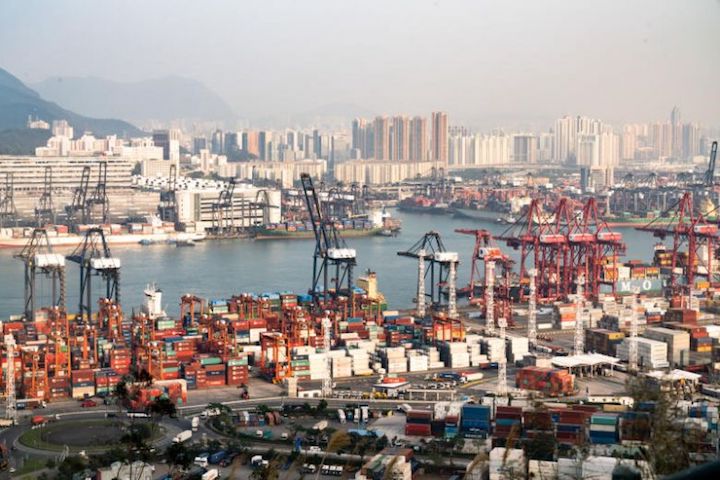Hong Kong can’t catch a break.
January was supposed to be the month that sagging exports from the Asian finance hub’s huge port started to bottom. Instead, they slumped. By a lot more.
While the data were probably affected by the annual Lunar New Year holidays, they also show that whatever dividend was likely from the U.S. and China trade deal has already evaporated. The focus now is on how much worse the pain could get as the city braces for fallout from the coronavirus.

The disruptions, meanwhile, are reverberating:
- The shipping industry will remain volatile for most of the year, said Gene Seroka, executive director of the Port of Los Angeles. In an interview, he said cargo traffic at the largest U.S. container port is down about 25% so far this month, a drag that could push total container volume down 15% in the first quarter.
- The U.S. imported half the amount of goods from China in the week ending Feb. 20 as it did in the same period last year, according to IHS Markit data compiled by Bloomberg.
- Economists are beginning to war game what an untethered outbreak could mean for global growth. Oxford Economics reckon an international health crisis could be enough to wipe more than $1 trillion from global gross domestic product.
- China’s mammoth steel sector — which accounts for more than half of global production — is in turmoil. Stockpiles of rebar, a key construction material used to reinforce concrete, have swelled to a record. That’s hurting the price of iron ore, Australia’s biggest export.
- When Bloomberg reporters recently fanned out across the globe, they found plenty of examples of companies feeling the strain: New Zealand lobsters that were released back into the wild. A San Diego game studio that faced delays to its latest fantasy board games. A Hong Kong watch maker who couldn’t get coils or wheels.







_-_127500_-_3c040b6cb8335b4cad39477f7f55a34202568c96_lqip.png)
